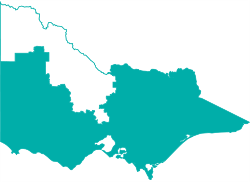Protecting our health and our economy
Prioritising climate resilience now makes economic sense and is vital for Victoria to remain one of the most liveable places in the world.
For example, increasingly severe and longer lasting bushfire seasons may create poor air quality and respiratory problems for many people, while endangering critical ecosystems and infrastructure. Heatwaves are the leading cause of weather-related deaths in Australia and will increasingly threaten worker safety and productivity in weather-exposed industries.
It is estimated that every $1 spent on adapting to climate change now saves society an average of $6 in future costs.
Taking steps now to build our resilience reduces the impacts on the health of people and ecosystems and minimises economic disruption. It also protects Victoria as a destination for investment, employment and tourism.
Ambitious adaptation efforts taken today can help to prevent future disruptions and job losses in industries that are central to our state’s economy, such as tourism and primary production.
Tourism: Improving the climate resilience of Victoria’s precious coastal assets, transport infrastructure and agricultural regions helps protect our tourism industry which employs more than 230,000 people and contributes $26.7 billion to our economy.
Primary industries: Victoria accounts for over 28% of Australia’s food and fibre exports and is on track to reach its $20 billion export target by 2030. To manage climate impacts on agricultural productivity, Victoria must identify climate risks to production and supply chains, and support primary industries to diversify and maximise opportunities from the changing climate.
We are investing in adaptation to reduce costs and ensure Victoria’s prosperity
The costs of not adapting to climate change are too high
Failing to prepare for the worsening impacts of climate change means falling behind. Victoria cannot afford to delay action now and pay the price later.
If emissions continue to grow at the rate seen in recent decades and no adaptation action is taken, the estimated costs of damage from climate change in Victoria would be over $150 billion by 2050, escalating to about $1 trillion by 2100. These estimates likely understate the full financial impacts, as they do not include most of the costs of floods, bushfires, pollution and biodiversity loss.
Sea-level rise of 80 cm by 2100 could put at least an estimated $18.3 billion worth of Victoria’s coastal infrastructure and assets at risk of inundation and erosion.
Heatwave events already cost Victoria on average $87 million each year. By 2030, they are predicted to cost the Victorian economy $179 million per year.
The global economic and financial signals to adapt are growing
Institutional financiers and insurers are prioritising investment in the regions, industries and companies that are actively managing climate risk. International ratings agencies also include climate-related factors in evaluating governments’ creditworthiness. Failing to take early adaptation action increases the risk that more private and commercial properties may be uninsurable from future impacts like bushfires and sea-level rise.
Investing in adaptation now also positions Victoria to lead and benefit from emerging solutions – such as new construction and manufacturing technologies and methods – that will be increasingly needed to ensure the climate resilience of our critical infrastructure and services. By moving early to confront the challenges ahead, we can seize on opportunities.
We are investing in adaptation so communities can thrive
Supporting communities to take local action
People across Victoria are concerned about the climate impacts they are already experiencing and want everyone – business and industry, local government, environment groups and individuals – to play their part. More than 8,000 people contributed to the development of 6 community-owned Regional Adaptation Strategies to guide local action over the next 5 years.
Loddon Mallee regionThe region’s highest earning industries are manufacturing and agriculture, and its projected population growth is higher than the Victorian average. Loddon Mallee is home to Victoria’s highest proportion of Aboriginal people and over 8,000 Aboriginal places of cultural significance. Its Strategy focuses on ensuring climate ready people, places and sectors. |
|
Hume regionAgriculture, forestry and fishing are Hume’s biggest earning industries, while hospitality and tourism are its largest employers. Its Strategy focuses on emergency management, the natural environment, renewable energy, health and wellbeing, the built environment, and the economy and workforce. | 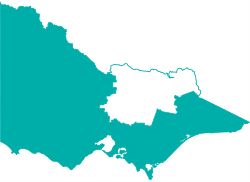 |
Gippsland regionThe region contributes a high share of Victoria’s gross regional product ($15.4 billion in 2015). The vision of Gippsland’s Strategy is for Gippslanders to be aware of climate change impacts on community and Country, be flexible to adapt, and be supported in adapting to climate change. | 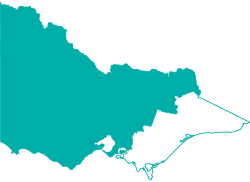 |
Grampians regionBallarat is the largest regional centre in the Grampians region. Agriculture accounts for the majority of land use in the region, which is known for its diverse geography and many tourist destinations. The Grampians Strategy focuses on 8 interconnected themes: agriculture, biodiversity, economy, fire, health and wellbeing, heat, storms and flooding, and water. | 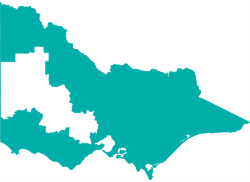 |
Greater Melbourne regionThe region is home to around 5 million people – three-quarters of Victoria’s population – and over 200 languages are spoken across the region. The region’s Strategy takes a systems approach to 12 action areas. Its vision is for the region and its communities to have the agency, will, skills and resources to adapt to climate change. | 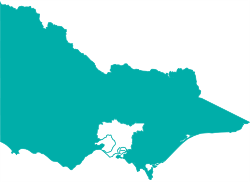 |
Barwon South West regionThe region accounts for a quarter of Australia’s dairy production. While its population has grown in areas like Torquay, populations are shrinking in traditional agricultural areas. The region’s Strategy has 12 comprehensive focus areas and its principles for collaboration are inclusion, equity, use of the best available information and tools, and deliberative learning. | 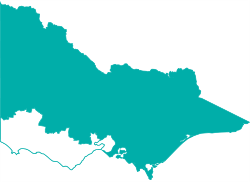 |
Ensuring no one is left behind
For some people, climate change is an additional pressure on top of existing vulnerabilities and challenges. For example, more intense and longer lasting hot weather poses bigger risks to the health of older people, young children and pregnant women. Heat stress also disproportionately affects people with disabilities.
Often, the people who are more vulnerable are also the least equipped to adapt to climate change. The costs of adapting – such as to retrofit homes to be cooler in summer or to repair them after storms or floods – can be prohibitive for people on low incomes, who may also be unable to afford insurance.
Building climate resilience means accounting for these varied impacts and ensuring vulnerable people are at the forefront of decision making.
The Victorian Government is committed to including diverse perspectives, partnering with local government and helping to create stronger communities by supporting Victorians to build resilience to climate change.
Supporting Traditional Owner self-determination and care for Country
Traditional Owners have protected and cared for Country since the Dreaming. However, due to colonisation, they have experienced dislocation and dispossession from their rights and rites to Country.
Given Australia’s history of dispossession, the Victorian Government has an obligation – on behalf of the people of Victoria – to work in partnership with Traditional Owners and Aboriginal Victorians to support their right to self-determination. Treaty and the Yoo-rrook Justice Commission are key steps towards advancing self-determination, healing and supporting Traditional Owners’ rights on Country.
Victorian Traditional Owners have developed the Cultural Landscapes Strategy to provide direction to the Victorian Government about how it can enable and empower Traditional Owner self-determination in land management.
The Cultural Landscapes Strategy sets out a framework and pathways to lead the planning and management of Country in line with cultural obligations to care for Country. This is further supported by the strategic commitments of the Victorian Government Department of Environment, Land, Water and Planning (DELWP) to enable self-determination and the rights of Traditional Owners, listed under the Country domain of Pupangarli Marnmarnepu ‘Owning Our Future’ Aboriginal Self-Determination Reform Strategy 2020–2025.
The Victorian Government is proud to work with Traditional Owners to better care for Country though various initiatives. This has included facilitating the re-introduction of cultural burning and the introduction of the landmark Wilip-gin Birrarung murron (Yarra River Protection Act), which enshrines in law the protection of the Yarra River corridor and acknowledges the significance of the river to the Wurundjeri People and their ongoing role in its management.
Climate change has a unique impact on Aboriginal people, especially when it comes to seasonal management and spiritual connections with Country.
Climate change poses an additional threat to cultural values and sites, beyond the legacy of colonisation.
The Victorian Government will continue partnering with Traditional Owners and Aboriginal Victorians to ensure their cultural, ecological and economic values and expertise are integrated into climate change adaptation planning. This is one of the Government’s 5-year adaptation priorities outlined in Victoria’s Climate Change Strategy, and aligns with DELWP’s support of self-determination by creating an environment that understands and respects the rights and interests of Aboriginal Victorians.
Case study: Partnering with Dja Dja Wurrung to advance self-determination and climate change adaptation
The Victorian Government has partnered with the Dja Dja Wurrung Nations to build knowledge about how climate change impacts cultural values associated with water and identify opportunities to adapt.
Dja Dja Wurrung has developed a climate change cultural water values framework (renamed Bundjil’s Law) as part of the Pilot Water Sector Climate Change Adaptation Action Plan 2018–2020, funded by the Victorian Government. The framework outlines Dja Dja Wurrung Cultural Water Values and highlights how Dja Dja Wurrung world views and connection to Country need to inform climate change adaptation. The framework is a cross-cultural tool to support the Dja Dja Wurrung and government water managers to work in partnership on ensuring climate change adaptation initiatives align with Dja Dja Wurrung rights, obligations and Country objectives.
Lessons from this project will be shared with Traditional Owner groups and government agencies to build overall cross-cultural capacity and better protect and embed Traditional Owner knowledge, governance and rights into climate change adaptation policy and planning, including across the 7 Adaptation Action Plans.
Page last updated: 15/02/22
